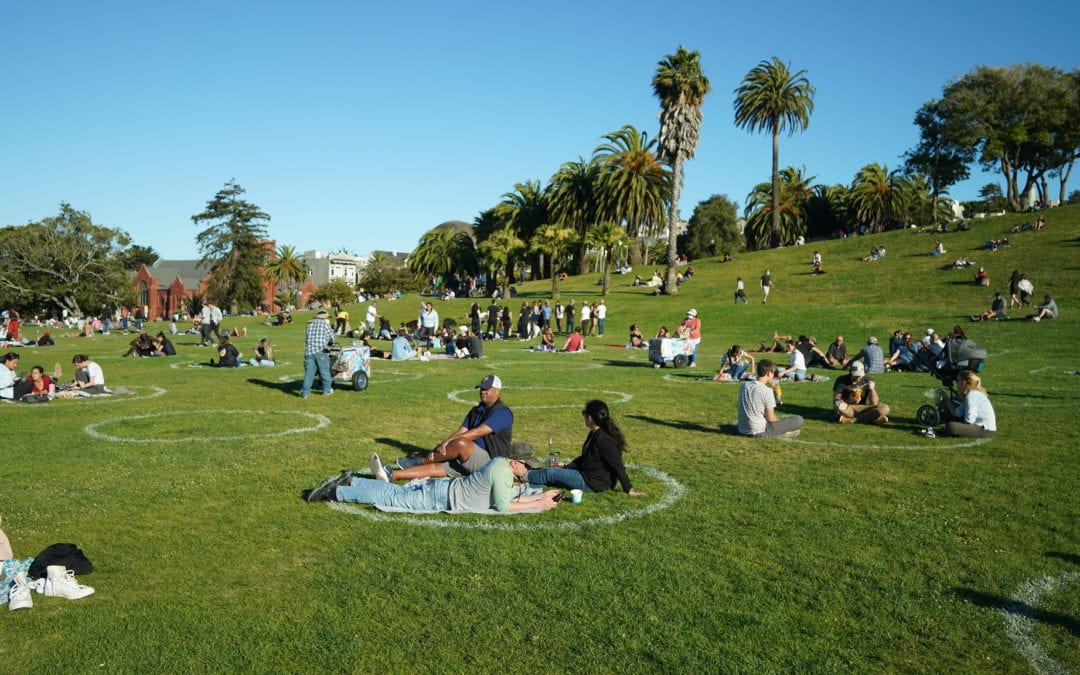People in social distancing circles at San Francisco’s Dolores Park amid the coronavirus outbreak on June 9, 2020. Photo by Lynn Friedman is licensed under CC BY-NC-ND 2.0.
The recent global pandemic has disrupted all of our lives, while highlighting a myriad of “wicked problems” facing cities. In just a matter of months, cities look and feel different. For many, we are looking at them out our window or within the small perimeter in our neighborhood. The isolation during shelter-in-place has shed light on the importance of community and public space in all of our lives.
This is a time for collective resilience.
As I will not be traveling to Peru physically, I’ve been working on adapting the exchange to a remote platform that utilizes technology for collaborative engagement through virtual and augmented reality environments. It has been challenging to re-envision a program focused on the social challenge of urban development in public space during a time of quarantines and web-based communication. However, I am optimistic about the potential for reframing these challenges as opportunities for creative exploration with the American Arts Incubator participant cohort in Lima.
During the past few months, I have been reflecting on the implications of the pandemic on the way cities are used and how they are designed. In a way, the pandemic affords us time to contemplate the present conditions and envision a better future for our cities. I’m interested in how art + technology can be leveraged to inspire collective optimism and enable participatory urbanism.
In my own creative practice, I have explored ways to contextualize and make visible the past, present, and potential futures of cities. This often involves mapping to visualize a geo-spatial and layered place narrative. I look forward to learning more about Lima from the selected group of interdisciplinary artists through their personal psycho-geography of the city and speculative vision of what the city could be. If we traveled to Lima in the year 2100, what might we write back about how the city and world has changed?
In recent years, I’ve been especially interested in interactive and participatory artwork that actively engages the audience in a process of discovery and agency in creating collaborative visions of adaptive urbanism. As we focus on Lima’s public space as a collectively owned democratized canvas, I am excited about the discussion, creative projects, and community that will come out of it. In my role as Lead Artist and facilitator, my goal is to help amplify the creative voices of the local participant artists within their communities and abroad.

